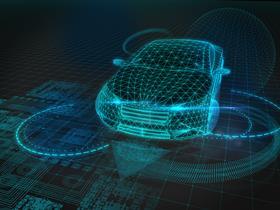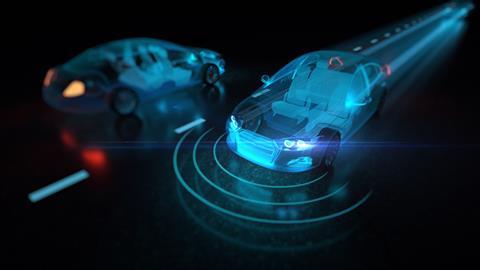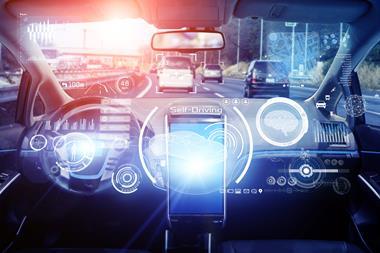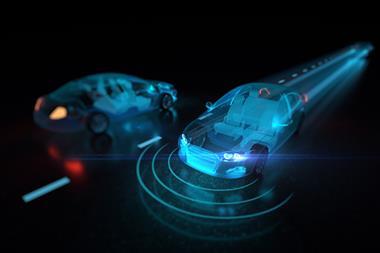The report’s recommendations provide clarity on driver accountability, but some industry commentators believe there is still more to discuss
The prior “major sticking point” of clarifying liability for road accidents involving autonomous vehicles has become “more straightforward for providers” following a new report from statutory independent body the Law Commission, according to GlobalData insurance analyst Benjamin Hatton.
The UK government’s push towards automated driving has triggered an array of concerns for the insurance industry, including how to distinguish between driver assistance tools and self-driving technology in the event of an insured making a motor claim following a collision, for example.
The Law Commission of England and Wales, in partnership with the Scottish Law Commission, therefore published a joint report on 26 January 2022, seeking to clarify existing questions around autonomous driving. Within the report, the bodies recommended the introduction of a new Automated Vehicles Act.

Under this act, when a car is authorised by a regulatory agency as having ”self-driving features” and those features are in use while on the road, the person in the driving seat would no longer be responsible for how the car is driving and will, in turn, be legally protected.
Instead, the company or body that obtained the authorisation – referred to as an Authorised Self-Driving Entity – would face regulatory sanctions if a road traffic accident were to occur.
For insurers, Hatton said “explicitly stating where liability falls in the event of an accident has been a major sticking point” since the onset of autonomous driving. Therefore, “by redefining the driver as a ‘user-in-charge’ and allocating responsibility to the manufacturer, insurance should become more straightforward for providers”, he added.
Robert John, senior associate at corporate and insurance focused law firm RPC, agreed with the report’s proposals.
“It’s like buying a microwave – if it catches fire and burns your house down, should the owner be charged with arson? Of course not,” he said.
Plus, balancing regulation and “fast-moving [technology] advancements” through a potential Automated Vehicles Act will help “give consumers the confidence to buy and use automated vehicles”, John added.
Meanwhile Doug Jenkins, motor technical risk manager at Axa Commercial, echoed Hatton’s sentiments. He additionally noted that the report’s recommendations will prevent “misleading marketing to avoid user confusion” too.
Recommendations ‘do not go far enough’
According to the Department for Transport’s Connected Places Catapult: market forecast for connected and autonomous vehicles report, published in January 2021, the UK market for road vehicles with connected and autonomous technologies in 2035 is estimated to be worth £41.7bn - a 42% increase on the £2.7bn market worth that was predicted by the DfT’s previous 2017 report.
The UK market for connected and autonomous technologies that have been installed in UK vehicles is expected to be worth £6.4bn in 2035, compared to a £100bn global market.
Despite this expected market-wide uptick in appetite for autonomous driving tech, LV= General Insurance claims director Martin Milliner believes the Law Commissions’ report does ”not go far enough” - although the insurer is mainly supportive of the recommendations overall.
He explained: “This landscape is evolving all the time, so what we would additionally call for is the missing undercard of actions that are needed to ensure these recommendations can work and that there will be an equality of arms for car owners when it comes to motor manufacturers or law enforcement.

“Most cars on our roads manufactured after 2018 could be enabled to have autonomous driving functions through over-the-air and software upgrades, but our primary concern is how the recommendations can be effectively deployed for car owners.
“Consumers need to understand what will and won’t be happening to their cars and what they need to do to understand any new features.
“A question [also] remains about how consent will be governed around such upgrades, or in respect of data sharing that doesn’t disadvantage car owners.”
Factors still to consider
Although the Law Commissions’ joint report has offered some clarity around autonomous vehicles, processes around accident investigation and determining accountability still need fine tuning.
For example, Milliner explained that there “needs to be a fully transparent, consistent and timely sharing of vehicle data by motor manufacturers and customers to brokers, insurers, law enforcement agencies and regulators”.
“Otherwise, there will be a need for lengthy, drawn out legal battles, which harm consumers and [create] reputational damage to insurers and motor manufacturers alike,” he added.
Cogent Hire managing director and civil litigation solicitor Kirsty McKno agreed with Milliner, noting that “establishing a view on how liability should be defined and determined is fundamental to accident investigation”.
She additionally supported the report’s suggestion for a forum, which she believes will be useful in deciding the provision of non-fault mobility solutions.
“If an autonomous vehicle is involved in an accident with a standard vehicle, there will still be a requirement for a temporary replacement vehicle funded by the at-fault party,” she explained.
Despite these outstanding questions, January’s report provides a “good indication of the pathway towards [implementing] this technology”, said Hatton.
GlobalData predicts autonomous vehicle production will begin in 2030. Hatton added: “The process is still in its relative infancy, but insurers will be pleased to see a pathway for autonomous vehicles slowly come to the fore.”
Hosted by comedian and actor Tom Allen, 34 Gold, 23 Silver and 22 Bronze awards were handed out across an amazing 34 categories recognising brilliance and innovation right across the breadth of UK general insurance.





















































No comments yet